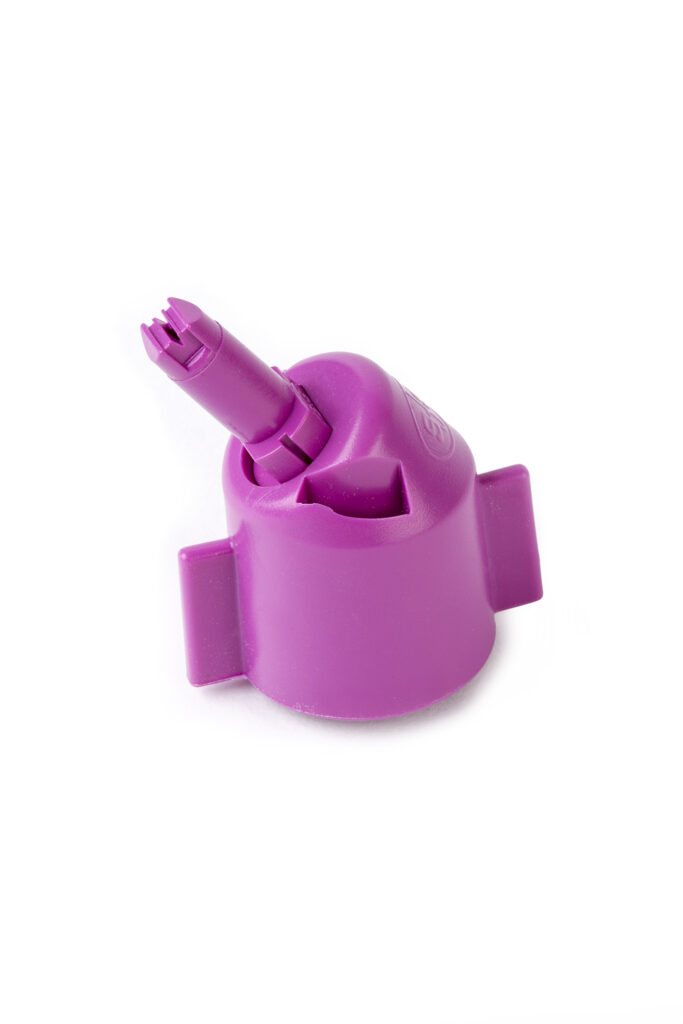The key aim of Regen Agriculture is to farm more sustainably, both in terms of soil biology in the ground, and profitability of the farm.
Key to this is:
- Minimising mechanical soil disturbance and seeding directly into untilled soil
- Enhancing and maintaining carbon rich organic matter on the soil surface using crops, cover crops or crop residues
- Reducing inputs where appropriate, and using them more effectively
- Product choice – be it varieties with greater disease resistance, fertilisers with less impact on soil flora and fauna, and with greater nitrogen use efficiency, down to nozzle choice when applying pesticides and foliar nutrients
It may seem an anathema for a regen magazine to be talking about spray nozzles, but you have to remember that regen agriculture currently still depends upon the continued use of glyphosate at least. And regen farming is not necessarily “organic” farming – we still expect high crop yields, which depend on the use of herbicides and fungicides. Yes the aim is to minimize their use, and if appropriate omit the application (especially of insecticides) all together.
So, if we have to apply pesticides, there is no point at all in allowing these to stray over the crop edge, where they can adversely affect the adjacent habitats and waterways. Quite apart from the financial cost of lost active ingredient, there can be significant damage to wild plants, insects and mammals.

BFS have been at the forefront in the development of low drift nozzle technology, having introduced the first air inclusion nozzle range in the mid nineteen nineties, namely the BFS Air Bubble Jet. These revolutionized low drift spraying on farm by making “Air Tech” technology affordable to any farmer, simply by utilizing the principle of induction. This is where the pressurized flow of spray liquid draws in air through specific air inlets molded into the nozzle body. These nozzles could easily replace existing nozzles, so any sprayer could become LERAP compliant relatively easily and cheaply.
When introduced, Air Bubble Jets reduced the level of drift relative to a flat fan nozzle, by 75%. The effect of this was a massive reduction in non-target contamination by spray drift. Since then we have brought in a 90% less drift air inclusion nozzle, the BFS ExRay XC, making drift an unnecessary occurrence. The days of using the original, drift prone flat fan nozzles are severely limited, and really should only be used in perfect spraying conditions where drift will not occur.
Even when applying nutrients and foliar nitrogen to crops, coverage of the target plants is of paramount importance. Low Drift nozzles should always be used. We should never be spreading these products into the grass margins and upsetting the fine balance of nature that lies there. We do not want to encourage very competitive, aggressive weeds that could smother small, native flowering plants.

Nozzle choice is only one aspect of drift reduction programs. Our advice to reduce drift to the bare minimum:
- Select a 4 Star rated LERAP nozzle like the BFS ExRay XC, or at minimum a 3 Star rated BFS Air Bubble Jet
- Do not spray in windy weather. A light breeze is preferable. Never spray if spray droplets are heading towards sensitive margins
- Use a higher volume of water through a nozzle with a larger orifice. This produces larger, less drift prone droplets. BFS have a wide range of larger output nozzles
- Slow down – there is less air movement to affect the smaller droplets
- Lower the boom, but consistent with the double overlap from adjacent nozzles required, reduces the time it takes a droplet to travel from the nozzle to the target, which is critical – the shorter the time, the less risk of drift
- Alternate adjacent nozzles to face forward 30 degrees forward (BFS produce a 30 degree angled cap) and straight down. There will be less impact between the fan pattern from adjacent nozzles, which causes small droplet formation and thus, potentially higher drift
- Lower the operating pressure, but within the nozzle parameters, to create larger droplets less prone to drift
- Eighty degree nozzles naturally produce fewer smaller, diftable droplets, so use these if your sprayer is suitable (25cm or 33cm nozzle body spacing)
On a similar environmentally friendly note, BFS also manufacture liquid fertiliser application caps and bars. Again these are so much better for the environment where they can place nitrogen and sulphur accurately and precisely right up to the crop edge, and no further. Again not encouraging aggressive weeds from the boundary.
The BFS AutoStreamer bars are variable rate compatible so accurate targeting is possible, resulting is less fertiliser usage. This, coupled with accurate foliar nitrogen placement by Air Bubble Jets, makes the whole BFS system more environmentally acceptable.
The BFS 5 Star and Nova ranges can be utilised for delivering fertiliser in a band, where it is easily found and absorbed by plant roots as they are germinating and becoming established. These will fit those cultivator type drills with liquid delivery systems, placing the fertiliser behind a coulter in a narrow band. This allows you to reduce the overall application rate of product per hectare, but also you are not encouraging weed growth between the rows. Definitely part of the regen ethos.
BFS products are all designed, manufactured and quality tested here in the UK. So fewer air miles and less impact on the environment. Quality British products.


